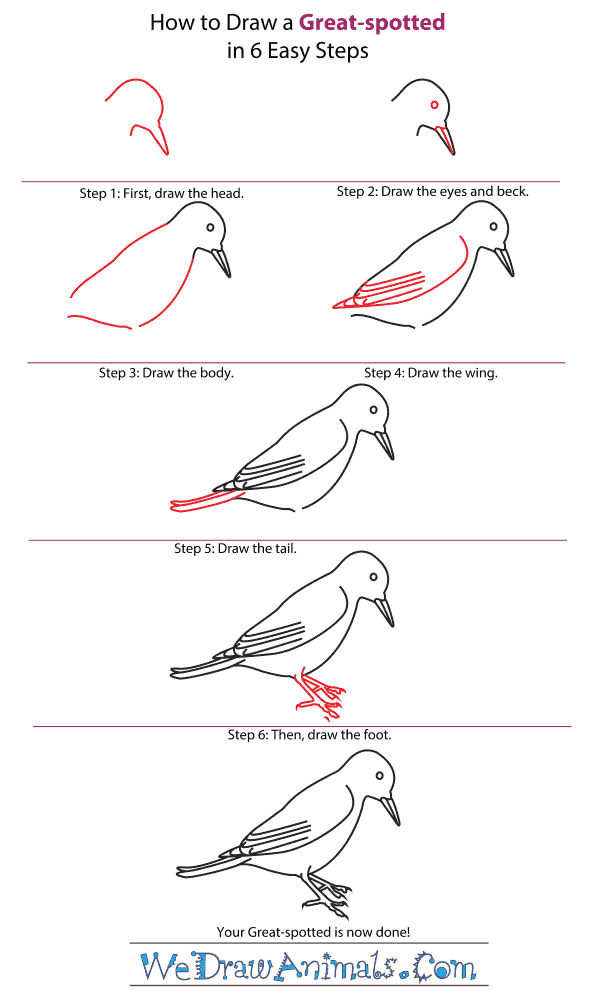In this quick tutorial you'll learn how to draw a Great Spotted Woodpecker in 6 easy steps - great for kids and novice artists.
The images above represent how your finished drawing is going to look and the steps involved.
Below are the individual steps - you can click on each one for a High Resolution printable PDF version.
At the bottom you can read some interesting facts about the Great Spotted Woodpecker.
Make sure you also check out any of the hundreds of drawing tutorials grouped by category.
How to Draw a Great Spotted Woodpecker - Step-by-Step Tutorial
Step 1: Begin be drawing a circles that comes to a point for the beak and then ends close to where you started for the neck.
Step 2: Add detail to the head. Add a circle for the eye and lines for the beak
Step 3: Extend the neck to the body. Leavr a small space for legs
Step 4: Add the wing. Make a large curved line, and then within the curved lines, draw smaller straight lines to create feathers.
Step 5: Draw the tail, which is another series of slightly-curved lines
Step 6: Using the space from Step 3, draw the legs. Remember that birds' legs are very thin and have three toes.
Interesting Facts about the Great-Spotted Woodpecker
Great spotted woodpecker belongs to the woodpecker family. They are mainly found in Northern Asia and Europe. It is 23-26cm long with a wingspan of 38-44cm and weigh about 70-98kg. Their rear part is black in color and has white under parts with a black crisscross pattern running on their body. They also have a distinct red spot under their tail and have greenish grey feet. It is easy to distinguish between males and females because males possess a distinct crimson patch on their neck that females lack. Females have a crimson mark on their forehead area. Their diet includes seeds, chicks, eggs, fruits, insects and rodents.
Did you know?
- You can spot great spotted woodpecker by identifying its ‘kick’ or drumming sound that it makes constantly while pecking on wood.
- It taps on the tree trunk and uses its gluey tongue to catch its prey from the cracks.
- This is the most common and abundant specie present from the family of Britain woodpeckers.
- Post mating, the male and the female woodpecker dig out a hole together which has a depth of 30cm, 4m high from the surface and has an oval access.
- The storage time for eggs is 16 days after which they hatch.
Lesson plan note: Take children out to a nearby park or zoo and let them observe birds. If you are lucky, you might find a woodpecker tapping its bill on the trunk of a tree. Or you can show children videos of woodpeckers excavating and creating a hole in the trunk using their beak.







